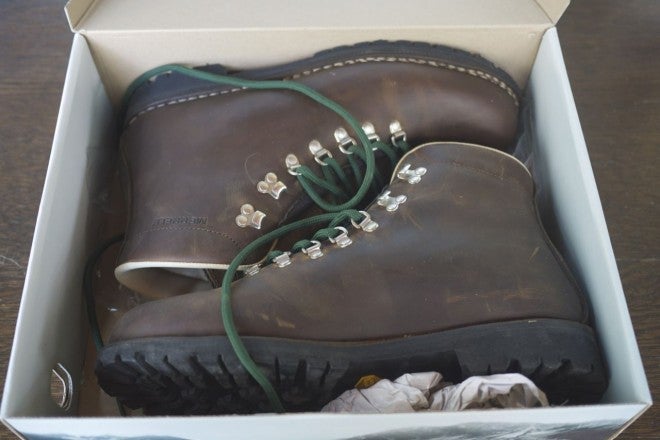Ontario Outdoors: Buying, Fitting and Maintaining Footwear
AllOutdoor Staff 03.10.15

In Part 1, we helped you narrow down what features to look for to select the ideal hiking boot for your hiking trip in Ontario. But if you think the next step is just running over to your local outfitter, shoving your right foot in an unlaced boot and handing over your credit card, you are sorely mistaken. Actually, your mistake may involve not only soreness, but blisters and wrecked hiking trip.
In this article, I’ll share some pro tips to find the footwear features you want and to get the best price and the best fit possible.
Visit your local outfitter on a weekday evening
If you know exactly what fits you, you’ll find great prices and selection on-line. But, if you haven’t bought footwear in a while, head straight to your local outfitter for measurement, advice, and to try on as many shoes as possible in the shortest period of time. If you find a good shoe there, then buy it there. It’s bad karma to “showroom,” aka, buy on-line after the clerk spent time to fit you in person. Instead, ask a manager if they can match lower prices on-line. Having a good relationship with your local outfitter provides a wealth of advice and service that far exceeds the $10 you could save on a website.
As for when to shop, definitely go at the end of the day when your feet will be swollen to their full size–the same size they’ll likely to be after an hour on one of Ontario’s rocky trails. But avoid the weekend at all costs. For some reason, America loves to shop on Friday nights. I’ve dealt with the tipsy hordes on Fridays long enough to know they don’t get the best service. There is simply no time to give each customer the time they need. Visit your local outfitter on a Tuesday night, when they’re dead and have a lot of time to let you try on as many shoes as you like.
Get a measurement
I don’t care what size you think your feet are: You’re wrong! 9 out of 10 men I’ve sold shoes to told me they wore a 10.5. One guy who told me that walked out with a size 12 wide! Your feet change over the years, generally getting flatter and longer, so get a full measurement with a Brannock Device–both seated and standing. The difference between seated and standing measurement will reveal a lot about your arch. Bonus points if the clerk asks you to take a quick walk in bare feet, to check for signs of pronation and suppination. A clerk that takes your word about your shoe size is a bad sign. Reassure them your feet don’t stink (they don’t, right?) and get them measured!
Wear socks
If you’re going to be hiking with a heavy winter socks, then try your footwear on with those same socks. If you’re hiking in the summer in light socks, wear those. A thick sock can add a size or more, so size your footwear accordingly.
Get an “active fit”
Don’t just shove your foot into an unlaced boot and proclaim “Works for me!” To get a good idea of the fit, you need to lace your shoe firmly and walk around with it a bit, preferably up and down some stairs. Leave your drivers’ license with the clerk and walk up and down a stairwell a few times or amble around the store and complete your shopping. A really good outfitter will let you take the boot home for a day or so on a “trial run” and return it if it shows early signs of incomparability. If the fit isn’t there, try another shoe until you get one that’s right.
Pay attention to “choke points”
Footwear typically fails in predictable ways. Excessive heel-slippage is the most common. If your heel raises more than 1/2 inch when you’re walking, this is a red flag. Footwear “breaks” or flexes around the toebox. If the natural break of your shoe doesn’t align with the natural break of your foot, you’re in trouble. “Toe-slam,” or your toes bumping the front of the toebox during descents is another typical flaw.
Break-In
For many years, heavy leather boots required an extensive “break-in” period prior to use. People soaked boots in mink oil, wore them in the shower, and otherwise abused them in hopes of avoiding blisters. Forget all of that! Generally speaking, the heavier the boot, the longer the break-in, but unless you’re wearing a truly massive pair of boots, a few weeks of light use are typically all it takes to break in a boot. Avoid compounds like mink oil that promise to “soften” leather at all costs. Many damage boots beyond repair. Focus on gradually building mileage and time until you can wear your boots for a full day without discomfort. This shouldn’t take long! If your boots are murdering your feet, then you’re the one that’s getting “broken-in,” and you should return to your outfitter for advice.